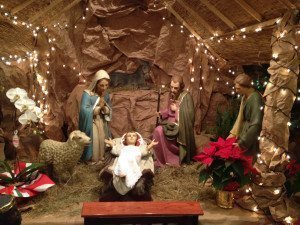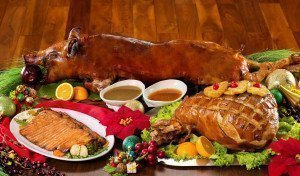In the Philippines, Christmas is one of the most awaited times of the year. It is filled with customs and celebrations, along with colorful Filipino parols and lights that adorn the streets, houses, and establishments nationwide.
Furthermore, Filipinos have the world’s most extended Christmas. For instance, while people across the globe are still thinking about taking away their fall decorations, the Filipino Christmas season has already begun—Filipinos are already decorating for Christmas and singing Christmas songs. In this article, we will delve deeper into how to celebrate Christmas in the Philippines and how you can make the most of it.
Christmas Season Begins During The “Ber” Months
Did you know that the Philippines has one of the world’s longest Christmas season? Filipinos like prolonging the celebration of this season for as long as they are able to.
For instance, the Christmas season begins as soon as the months ending in “ber” start. In fact, Christmas decors begin to emerge as soon as September comes. While other countries are still decorating for Halloween and Thanksgiving, Filipinos are already hanging a lot of Filipino parols, Christmas trees, and Christmas lanterns. This is an indication that Filipinos have already begun looking forward to the most beautiful time of the year.
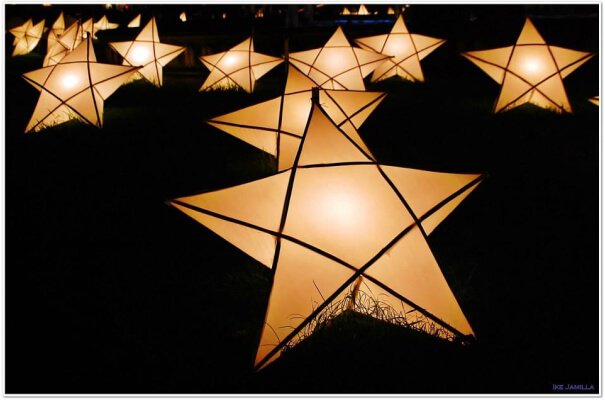
Photo by Ike Jamilla http://emjamilla.googlepages.com
In addition, during the first day of September, the famous Jose Mari Chan’s “Christmas In Our Hearts” begins to play on radios and malls. This song has also become a common meme on Facebook, which is shared as early as the last few weeks of August.
How Christmas is Celebrated in the Philippines
Christmas carols and songs
Filipinos are well-known for their passion for music. And, since it's the holidays, popular tunes and carols are a must-have.

Photo from https://www.rd.com/article/oldest-christmas-carol/
The song "Christmas In Our Hearts" by Jose Mari Chan is one of the most popular Christmas carols you will ever hear. When you hear this song, you will be reminded that the holidays are rapidly coming. With its catchy tune, this song wonderfully captures the spirit and traditions of Filipino Christmas. Aside from Christmas in Our Hearts, Filipinos look forward to hearing various songs that capture the true essence of the Philippine Christmas celebration. Among these songs is “Kumukutikutitap”, composed by National Artist for Music, Mr. Ryan Cayabyab.
In addition, Filipinos like to listen to the classic APO Hiking Society's song, "Himig ng Pasko," since it helps create a festive environment. Another popular song that Pinoys are looking forward to hearing is Aegis' Christmas Bonus. Filipinos often sing this song during Christmas time, with that famous line "Kaya't ibigay mo na ang aming Christmas bonus".
Caroling
Caroling is a well-known Christmas tradition in Philippines. Carolers are often groups of children that visit houses at night to sing Christmas carols in exchange for money. These carolers would sing with the accompaniment of tambourines and maracas made of tins or caps from bottled soft drinks.
After receiving money as a reward for singing, the children would express their gratitude to the homeowner via music.
Gift-giving
Filipinos like exchanging presents with their relatives, friends, and colleagues. When done with a sense of humor, gift-giving may become more fun.

Photo by ROMAN ODINTSOV from Pexels
Moreover, Filipinos have their own version of “Secret Santa” called Monito, Monita. It is one of the Christmas traditions that Filipinos look forward to where they exchange gifts among family members, friends, coworkers, and classmates. Monito Monita can be done on a daily or weekly basis, or it could happen whenever the group decides. Each participant will pick a name from a hat to choose who will get their present at each gift-giving session. The name must not be disclosed until the last day of gift-giving.
Christmas is when family, friends, and other loved ones get together to celebrate. For children, it is one of the most anticipated times of the year for their Aguinaldo or presents. They usually begin with the customary "mano", which is a gesture of reverence and deference. Then, you'll hear them utter the phrase "Namamasko po" to ask for presents.
The Festive Noche Buena
Most households celebrate Christmas in the morning in other nations, like Sweden, Spain, Ireland, and the United Kingdom. However, in the Philippines, people celebrate Christmas exactly on Christmas Eve with a feast called Noche Buena.
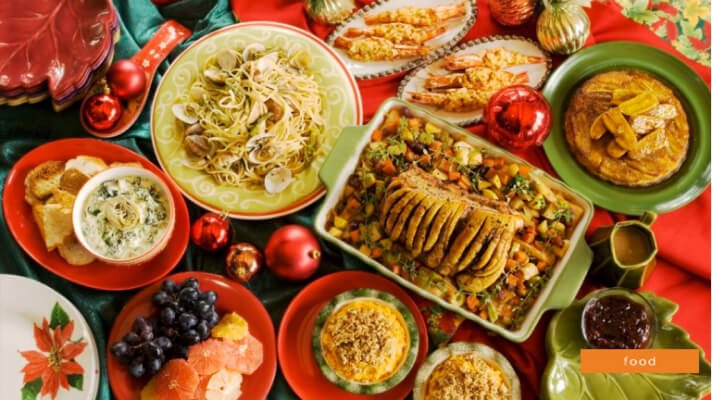
Photo source: y101fm.com
Noche Buena is a traditional Christmas Eve dinner that Filipino families enjoy together. It is the time of year when families opt to make their favorite dishes such as Lechon, Hamon de Bola, Morcon, fruit salad, Queso de Bola, and spaghetti, among others.
Noche Buena is not only about filling your stomach with excellent food. Instead, you will also get the opportunity to spend valuable time bonding with your family and loved ones while feeling the Christmas essence of sharing smiles and giving gifts.
Simbang Gabi
It is customary for Filipinos to attend a nine-day series of masses in preparation for Christmas, which is known as Simbang Gabi. It begins on the 16th of December and continues until Christmas Eve.
The final day of the Simbang Gabi occurs on Christmas Eve, which is a holiday in the Philippines. Misa de Gallo is another name for this. Stories say that if you complete the Simbang Gabi, your heart’s desire or wish would come true.
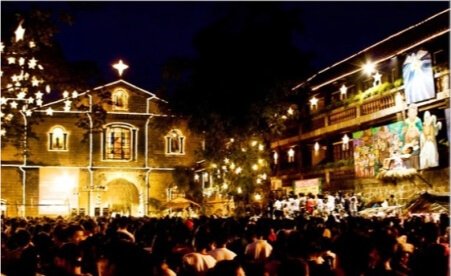
https://gageloniadmojo.wordpress.com/2013/12/12/simbang-gabi/
Attend Christmas Parties Or Host Your Own
It is not unusual in the Philippines for a Christmas party to be arranged in the groups or organizations you belong to. One may choose from various Christmas parties, including those held at school, at work, with your closest friends, high schoolmates, university friends, relatives, and even with your basketball team. There is something for everyone that the list might go on forever.
Most of them will have potlucks and involve some "Secret Santa" gift exchanges. Altogether, it can cost a good some money. Still, they will serve as a significant build-up to the main celebration on Christmas Eve. For the most part, Filipinos like them since they offer an excellent chance for people to enjoy friendly company, good times, and a lot of food.
Aguinaldo on Christmas Day for the kids
Filipinos place a great value on family and are proud of their close ties with extended family members. Christmas, in particular, is cherished because it brings the whole family together.
Traditionally, Filipinos spend Christmas Day at the homes of their extended family members, allowing the youngsters of the extended family to express their gratitude to their older relatives and get to spend time with relatives.
Children are also usually asked to do pagmamano, a traditional Filipino greeting of respect. The youngster will reach out to the elder's hand, bow as they pat the back of the elder's hand to their forehead, and say mano po. The elders then hand out crisp bills to the children in the form of Aguinaldo.
Children look forward to this part of the celebration as godparents are often expected to provide their godchildren with more Aguinaldo or Christmas gifts.
Filipino Feasting
Filipino cuisine is already unique in and of itself, but Filipino Christmas food is a whole other level of deliciousness altogether.
The sweet Filipino version of spaghetti, the brilliant orange noodles of Pancit Malabon, and the startling but delicious crispy-skinned Lechon or suckling pig are all traditional Christmas dishes in the Philippines.
Many delicious sweets are also available during this time of the year, some of which may even be purchased on the streets. Sapin-Sapin is a tiered glutinous (sticky) cake in purple, yellow, and white. Bibingka is another treat, a sweet glutinous rice cake cooked in a clay pot and then topped with shredded coconut and sugar. Biko, on the other hand, is a massive, sticky brown-sugar rice cake.
Sharing
Filipinos believe that the essence of Christmas is sharing. As such, there are a lot of feeding programs or give-a-gift charity works in the Philippines during this season. Different households, communities, or organizations hold these to provide foods or gifts to the less fortunate, to street children, children’s homes, and homes-for-the-aged. In this way, Filipinos do not only enjoy the blessings that they receive, but they also pay it forward.

Photo source: https://www.openforchristmas.com/give-gifts-christmas/
Christmas Stockings
Traditionally, Filipino children leave socks or stockings out for Santa Claus. The custom dates back to the Spanish period and is observed on Epiphany, also known as the Feast of the Three Kings. The kids would put their shiniest and newest shoes outside for the three kings to give gifts. Children would sometimes put out some grass and drinks as gifts to the monarchs' camels. However, except for a few scattered pockets of the country, this Spanish-era tradition is no longer practiced.
Christmas in a Cemetery
Even the dead may participate in the holiday festivities, as strange as that may seem. Some individuals choose to spend their Christmas in cemeteries. Unusual? No, not at all. It all began with a festive decorating competition organized by the cemetery employees, who expressed a desire for their annual staff party to be "more vibrant." Because of this, the cemetery is decorated with sparkling Christmas decorations every year, including lamps, Christmas trees, and a Belen statue (nativity scene).
How to celebrate Christmas this pandemic
It has been a challenging year for everyone in the Philippines due to the COVID-19 outbreak, which has left many people ill or out of work. The nation also batters several typhoons bringing significant flooding and destruction, particularly around the holidays.
With the current situation, many are wondering how to celebrate Christmas, this pandemic. It is most likely one of the few times in modern history when some people are urged to enjoy the Christmas season in its core, in its simplicity.
Because of the still ongoing COVID-19 pandemic, people are encouraged again to celebrate Christmas with members of the family who live in the same house, to wear masks at gatherings, practice social distance, and follow the precautionary washing of hands. People are discouraged from face-to-face celebrations and big gatherings for mutual safety and security. The typical Christmas joy and fun that people have come to expect is still not feasible this year.
However, COVID-19 should not damper Christmas celebrations for people! Spread more hope, peace, joy, and love throughout this holiday season!
It is good to remember that Christ the Lord was born in a manger during this season. This event is a heartfelt reminder of how the symbol of our hope was born. That is why even though this year has been challenging for us, we shouldn’t lose hope for a brighter future.
Take In the Christmas Spirit of the Filipinos
Christmas in the Philippines is unlike in any other place in the world. Christmas is a time to gather with family, friends, and community members, and a loving attitude seems to permeate the air more than the presents and abundance of food during this festive season.

Photo source: The Filipino Times
Take advantage of this positive outlook, which will last through the fourth quarter of the year, and end the year on a high note. The Filipino parols that decorate every street, home, and corner; the sounds of street carolers and their improvised instruments; and the happy Filipinos who make their country one of the most beautiful places in the world to celebrate the holidays are all worth taking in.
You can always carry the Philippine Christmas spirit with you wherever you go by following some of the Filipino Christmas traditions. Bring out your tambourines and decorate your home with Filipino parols as if you are celebrating in the Philippines. Pass on these Filipino Christmas traditions to your children, teach them how to celebrate Christmas in the Philippines, and let them enjoy it the Filipino way.
Moreover, even in this pandemic, people believe that these difficulties make celebrating Christmas this year all the more essential since the season's emphasis is on being grateful, finding hope, sharing love, and spending time with family.
Lessandra Blog is a compilation of lifestyle, community, and home-related articles. For real estate investment and tips on how to buy house and lots in the Philippines, visit Lessandra’s Lifestyle and Home Investments section. To know more about quality and affordable house and lots in the Philippines, give the property listing section a visit. Live in best, live in Lessandra.


